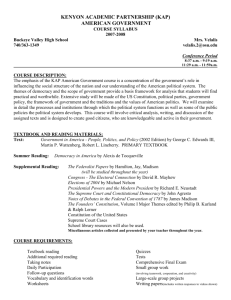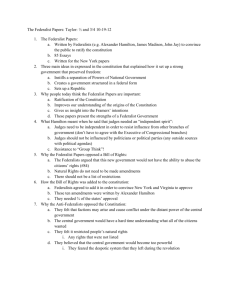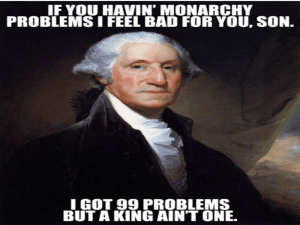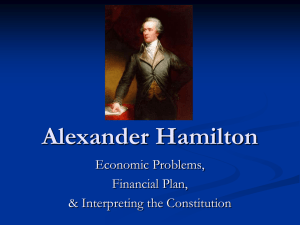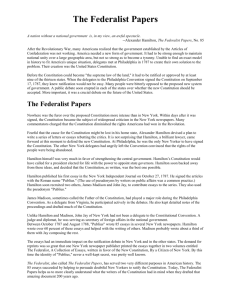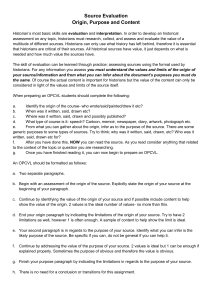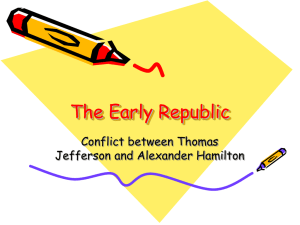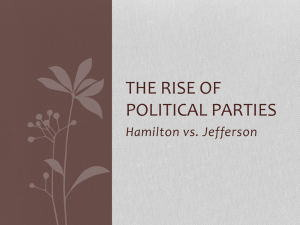Federalist Papers Authors
advertisement
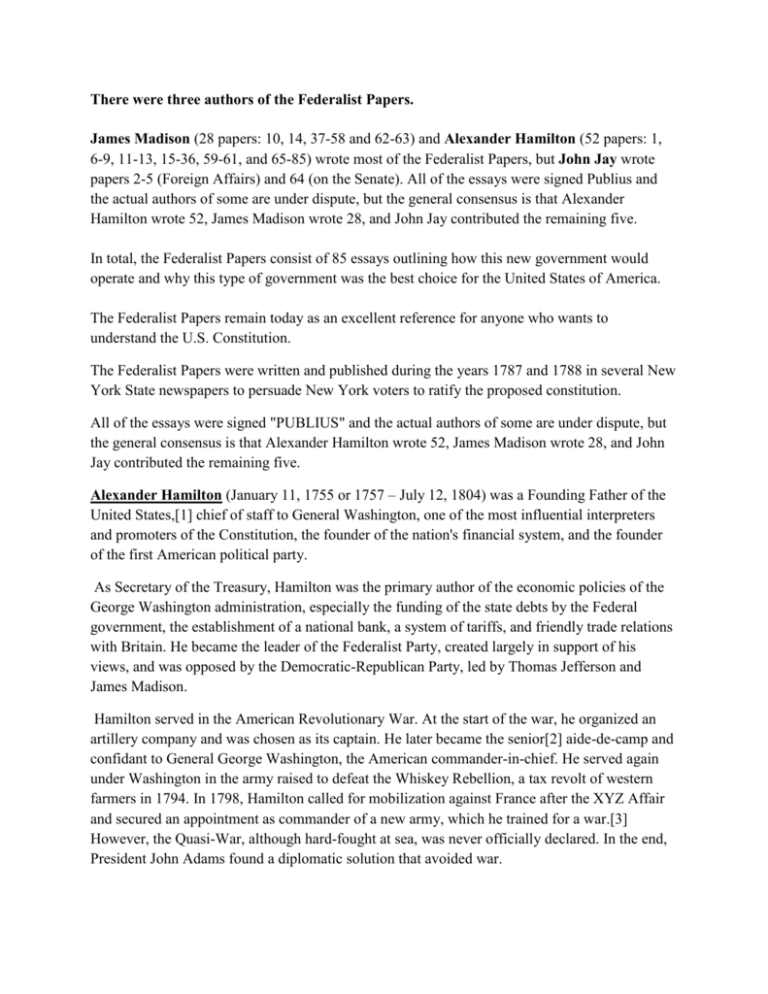
There were three authors of the Federalist Papers. James Madison (28 papers: 10, 14, 37-58 and 62-63) and Alexander Hamilton (52 papers: 1, 6-9, 11-13, 15-36, 59-61, and 65-85) wrote most of the Federalist Papers, but John Jay wrote papers 2-5 (Foreign Affairs) and 64 (on the Senate). All of the essays were signed Publius and the actual authors of some are under dispute, but the general consensus is that Alexander Hamilton wrote 52, James Madison wrote 28, and John Jay contributed the remaining five. In total, the Federalist Papers consist of 85 essays outlining how this new government would operate and why this type of government was the best choice for the United States of America. The Federalist Papers remain today as an excellent reference for anyone who wants to understand the U.S. Constitution. The Federalist Papers were written and published during the years 1787 and 1788 in several New York State newspapers to persuade New York voters to ratify the proposed constitution. All of the essays were signed "PUBLIUS" and the actual authors of some are under dispute, but the general consensus is that Alexander Hamilton wrote 52, James Madison wrote 28, and John Jay contributed the remaining five. Alexander Hamilton (January 11, 1755 or 1757 – July 12, 1804) was a Founding Father of the United States,[1] chief of staff to General Washington, one of the most influential interpreters and promoters of the Constitution, the founder of the nation's financial system, and the founder of the first American political party. As Secretary of the Treasury, Hamilton was the primary author of the economic policies of the George Washington administration, especially the funding of the state debts by the Federal government, the establishment of a national bank, a system of tariffs, and friendly trade relations with Britain. He became the leader of the Federalist Party, created largely in support of his views, and was opposed by the Democratic-Republican Party, led by Thomas Jefferson and James Madison. Hamilton served in the American Revolutionary War. At the start of the war, he organized an artillery company and was chosen as its captain. He later became the senior[2] aide-de-camp and confidant to General George Washington, the American commander-in-chief. He served again under Washington in the army raised to defeat the Whiskey Rebellion, a tax revolt of western farmers in 1794. In 1798, Hamilton called for mobilization against France after the XYZ Affair and secured an appointment as commander of a new army, which he trained for a war.[3] However, the Quasi-War, although hard-fought at sea, was never officially declared. In the end, President John Adams found a diplomatic solution that avoided war. Born out of wedlock and raised in the West Indies, Hamilton was effectively orphaned at about the age of 11. Recognized for his abilities and talent, he was sponsored by people from his community to go to the North American mainland for his education. He attended King's College (now Columbia University), in New York City. After the American Revolutionary War, Hamilton was elected to the Continental Congress from New York. He resigned to practice law and founded the Bank of New York. Hamilton was among those dissatisfied with the Articles of Confederation—the first attempt at a national governing document—because it lacked an executive, courts, and taxing powers. He led the Annapolis Convention, which successfully influenced Congress to issue a call for the Philadelphia Convention in order to create a new constitution. He was an active participant at Philadelphia and helped achieve ratification by writing 51 of the 85 installments of the Federalist Papers, which supported the new constitution and to this day is the single most important source for Constitutional interpretation. James Madison, Jr. (March 16, 1751 (O.S. March 5) – June 28, 1836) was an American statesman and political theorist, the fourth President of the United States (1809–1817). He is hailed as the “Father of the Constitution” for being instrumental in the drafting of the United States Constitution and as the key champion and author of the United States Bill of Rights.[2] He served as a politician much of his adult life. After the constitution had been drafted, Madison became one of the leaders in the movement to ratify it. His collaboration with Alexander Hamilton and John Jay produced the Federalist Papers (1788). Circulated only in New York at the time, they would later be considered among the most important polemics in support of the Constitution. He was also a delegate to the Virginia constitutional ratifying convention, and was instrumental to the successful ratification effort in Virginia. Like most of his contemporaries, Madison changed his political views during his life. During the drafting and ratification of the constitution, he favored a strong national government, though later he grew to favor stronger state governments, before settling between the two extremes late in his life. In 1789, Madison became a leader in the new House of Representatives, drafting many basic laws. He is notable for drafting the first ten amendments to the Constitution, and thus is known as the "Father of the Bill of Rights".[3] Madison worked closely with President George Washington to organize the new federal government. Breaking with Hamilton and what became the Federalist Party in 1791, Madison and Thomas Jefferson organized what they called the Republican Party (later called by historians the Democratic-Republican Party) As Jefferson’s Secretary of State (1801–1809), Madison supervised the Louisiana Purchase, which doubled the nation’s size. After his election to the presidency, he presided over renewed prosperity for several years. As president (1809–17), after the failure of diplomatic protests and a trade embargo against Great Britain, he led the nation into the War of 1812. He was responding to British encroachments on American honor and rights; in addition, he wanted to end the influence of the British among their Indian allies, whose resistance blocked United States settlement in the Midwest around the Great Lakes. Madison found the war to be an administrative nightmare, as the United States had neither a strong army nor financial system; as a result, he afterward supported a stronger national government and a strong military, as well as the national bank, which he had long opposed. Like other Virginia statesmen in the slave society, he was a slaveholder who inherited his plantation known as Montpelier, and owned hundreds of slaves during his lifetime to cultivate tobacco and other crops. Madison supported the three-fifths compromise that allowed three-fifths of the enumerated population of slaves to be counted for representation. John Jay (December 12, 1745 – May 17, 1829) was an American statesman, Patriot, diplomat, a Founding Father of the United States, signer of the Treaty of Paris, and the first Chief Justice of the United States (1789–95). Jay was born into a wealthy family of merchants and government officials in New York City. He became a lawyer and joined the New York Committee of Correspondence and organized opposition to British rule. He joined a conservative political faction that, fearing mob rule, sought to protect property rights and maintain the rule of law while resisting British violations of human rights. Jay served as the President of the Continental Congress (1778–79), an honorific position with little power. During and after the American Revolution, Jay was a Minister (Ambassador) to Spain, France and Secretary of Foreign Affairs, helping to fashion United States foreign policy. His major diplomatic achievement was to negotiate favorable trade terms with Great Britain in the Treaty of London of 1794 when he was still serving as Supreme Court Chief Justice. Jay, a proponent of strong, centralized government, worked to ratify the new Constitution in New York in 1788 by pseudonymously writing five of the Federalist Papers, along with the main authors Alexander Hamilton and James Madison. As a leader of the new Federalist Party, Jay was the Governor of New York State (1795–1801); and he became the state's leading opponent of slavery. His first two attempts to end slavery failed in 1777 and in 1785, but his third attempt succeeded in 1799. The 1799 Act, a gradual emancipation act, that he signed into law eventually brought about the emancipation of all slaves in New York before his death in 1829.
